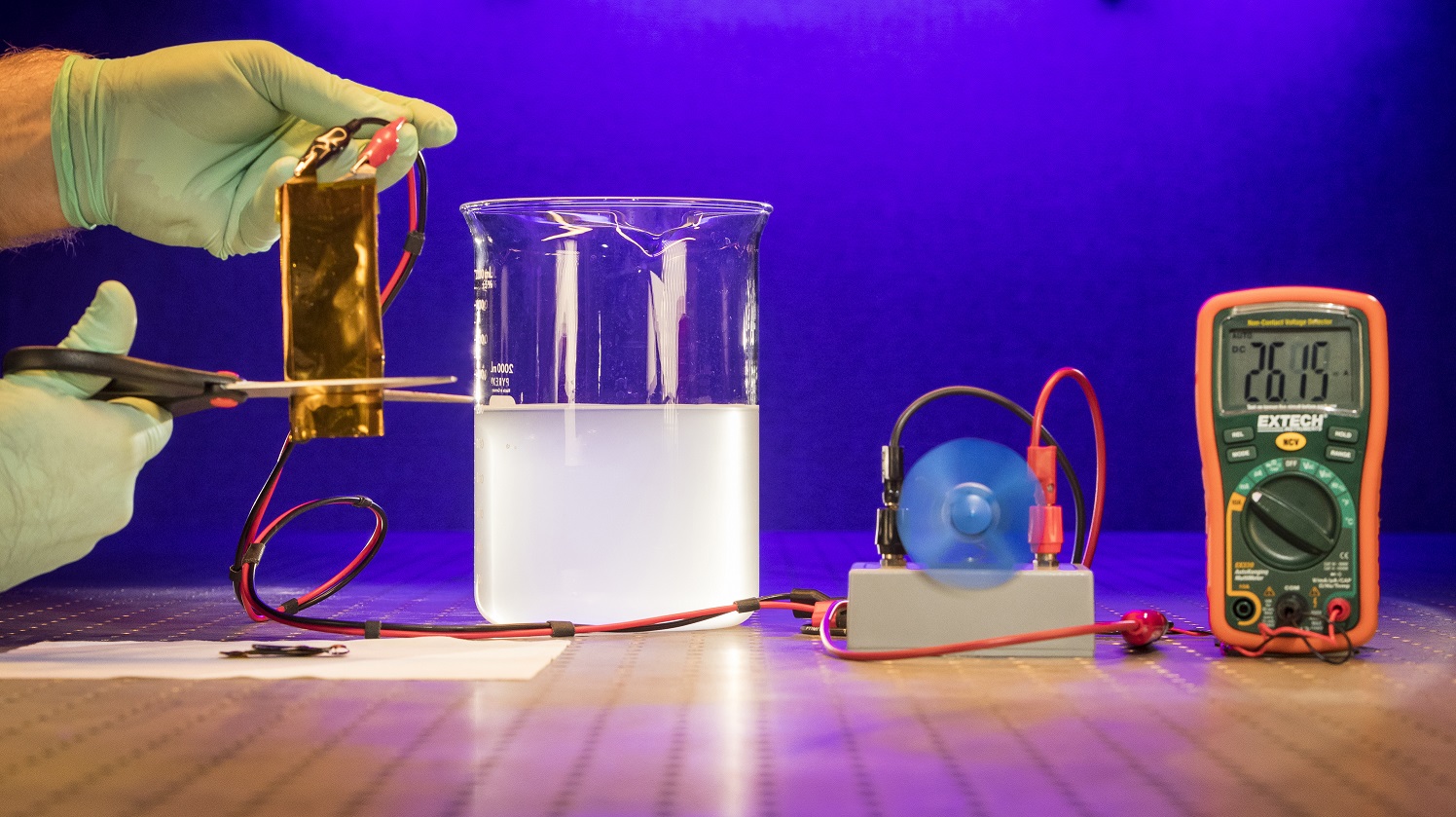By Aalyia Shaukat, contributing writer
A recent collaboration between researchers at Johns Hopkins University Applied Physics Laboratory (APL), the University of Maryland (UMD), and the Army Research Laboratory (ARL) developed a highly robust, flexible, and wearable Li-ion battery that maintains its mechanical properties despite being cut in half or submerged in fluid. The new battery possesses an energy density of 141 Wh/kg, and a power density of 20 600 W/kg. The electrolyte material is actually a gel version of the previously formed aqueous “water-in-salt” technology developed by UMD and ARL in 2015. This was accomplished by implanting the water-in-salt solution in a polyvinyl alcohol (PVA) polymer matrix, forming a gel polymer electrolyte (GPE).
To demonstrate the new Li-ion battery’s ability to sustain punishment, APL published a video subjecting the battery to some pretty harsh tests, which included immersing the battery in a saltwater solution, cutting it in half with scissors, and even shooting it multiple times with an air cannon projectile to simulate ballistic impact. Surprisingly, the battery held up to the battering and continued to power the load. That’s pretty impressive considering the battery packaging was a thin, electronically insulating heat-resistant tape to keep the GPE in place.
It’s no secret that lithium-ion (Li-ion) batteries have been the technology of choice for energy storage in the past decade due to its unique combination of high power and high energy density. From smart grid energy harvesting applications to the automotive segment with hybrid electric vehicles (HEVs) and electric vehicles (EVs), the global Li-ion battery production capacity was 29 gigawatt-hours in 2016 and continues to grow with new energy storage opportunities. Still, as energy densities increase, so does the risk of thermal runaway from accidental penetration. Even the United States Advanced Battery Consortium (USABC) — an operating body comprised of Chrysler, Ford, and General Motors that funds electrochemical energy storage research and development (R&D) — currently has goals to develop abuse-tolerant electrolytes for Li-ion batteries with high anodic, cathodic, and thermal stability.

New Li-ion battery developed by researchers at APL, UMD, and ARL powering load while being cut, shot at, and immersed in saltwater.
Conveniently, this gel-based Li-ion battery leverages the commonly used lithium vanadium fluorophosphates (LiVPO4 F) for both the cathode and anode, potentially lowering its cost low enough to compete with current Li-ion technologies on the market. As a final benefit, the use of non-toxic materials and flexible configuration allows for this technology to be used in displays, wireless sensors, and implantable medical devices without the typical safety concerns of Li-ion batteries.
Source: Jhuapl.edu, NRC.gov, Greentechmedia and Energy.gov
Advertisement





